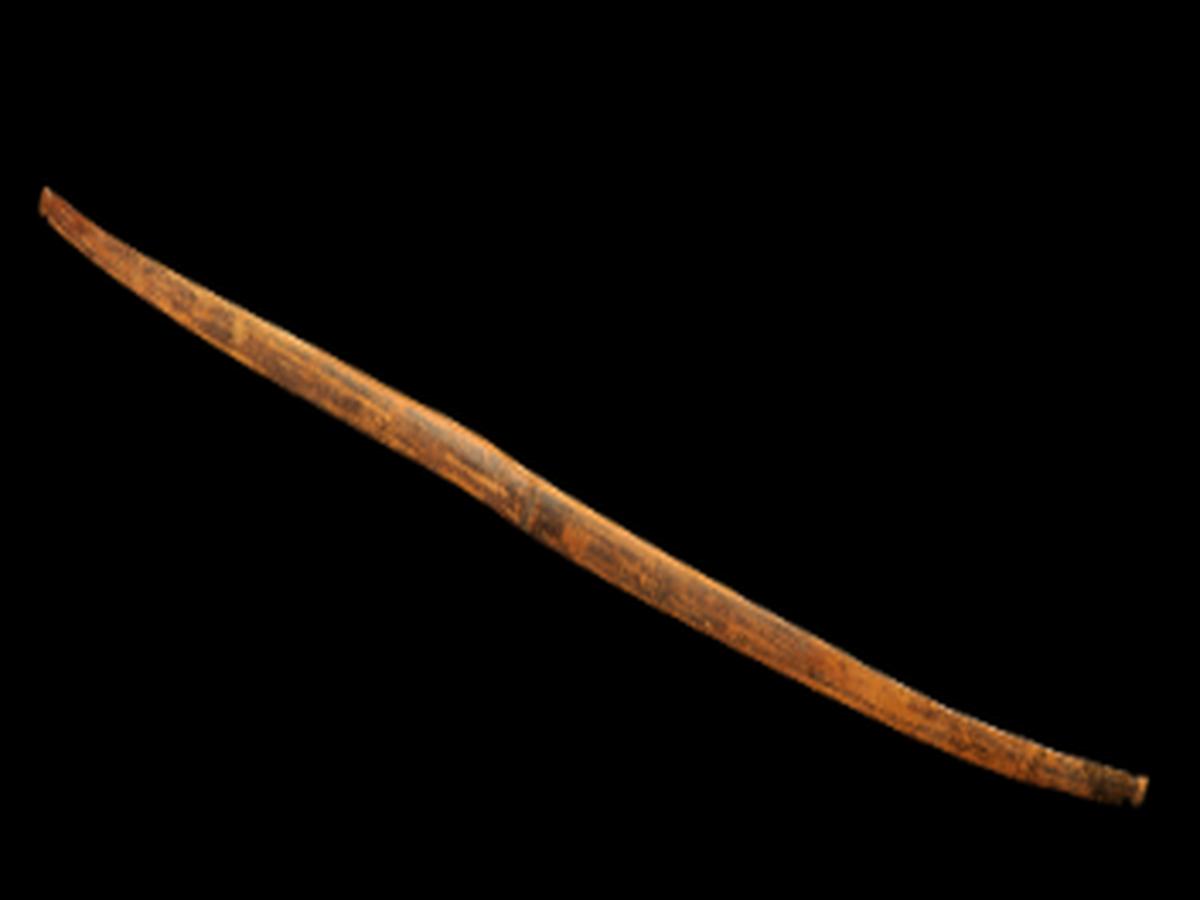State
Tribe Name
Art Type
short description
As an indigenous boy, this traditional pellet bow reflects an important example of indigenous craftsmanship and sustainable hunting practices among the Kadar, some of the oldest forest-dwelling tribes of India in the southern region. Bamboo, a unique material with strength, flexibility, and abundance in the dense forests of Tamil Nadu-the primary hinterland of Kadar incorporation-constitutes the main body of the bow. The features of design include a short, curved bamboo stave with very narrow notched ends and a wider central part. An evidence of minimal treatment to respect the parent natural form of the material is the remnant of a bamboo node left at the center point of the stave. Notches most likely serve to attach an elastic or cord to launch small clay or stone pellets for hunting birds and small mammals.
Thumbnail

Filter Postion
Left
Filter Background
Off
Theme
Filter Header Image

content
Image

description
As an indigenous boy, this traditional pellet bow reflects an important example of indigenous craftsmanship and sustainable hunting practices among the Kadar, some of the oldest forest-dwelling tribes of India in the southern region. Bamboo, a unique material with strength, flexibility, and abundance in the dense forests of Tamil Nadu-the primary hinterland of Kadar incorporation-constitutes the main body of the bow. The features of design include a short, curved bamboo stave with very narrow notched ends and a wider central part. An evidence of minimal treatment to respect the parent natural form of the material is the remnant of a bamboo node left at the center point of the stave. Notches most likely serve to attach an elastic or cord to launch small clay or stone pellets for hunting birds and small mammals.
Kadar sustain-ethnic maintenance of forests with food harvesting, honey gathering, and small-game hunting. This light, easy-to-handle bow would have been used by children and adults alike in survival activities in the jungle. Use of bamboo for the weapon is sustained as resource use, and the culture of the Kadar is framed into the forest ecosystem (Krishna, 2000).These artifacts today have cultural and anthropological significance in offering one insight into the tribal knowledge of nature as much as to an almost-symbiotic relationship.
Kadar sustain-ethnic maintenance of forests with food harvesting, honey gathering, and small-game hunting. This light, easy-to-handle bow would have been used by children and adults alike in survival activities in the jungle. Use of bamboo for the weapon is sustained as resource use, and the culture of the Kadar is framed into the forest ecosystem (Krishna, 2000).These artifacts today have cultural and anthropological significance in offering one insight into the tribal knowledge of nature as much as to an almost-symbiotic relationship.
Image Mode
landscape
promoted
On
Verified
Off
